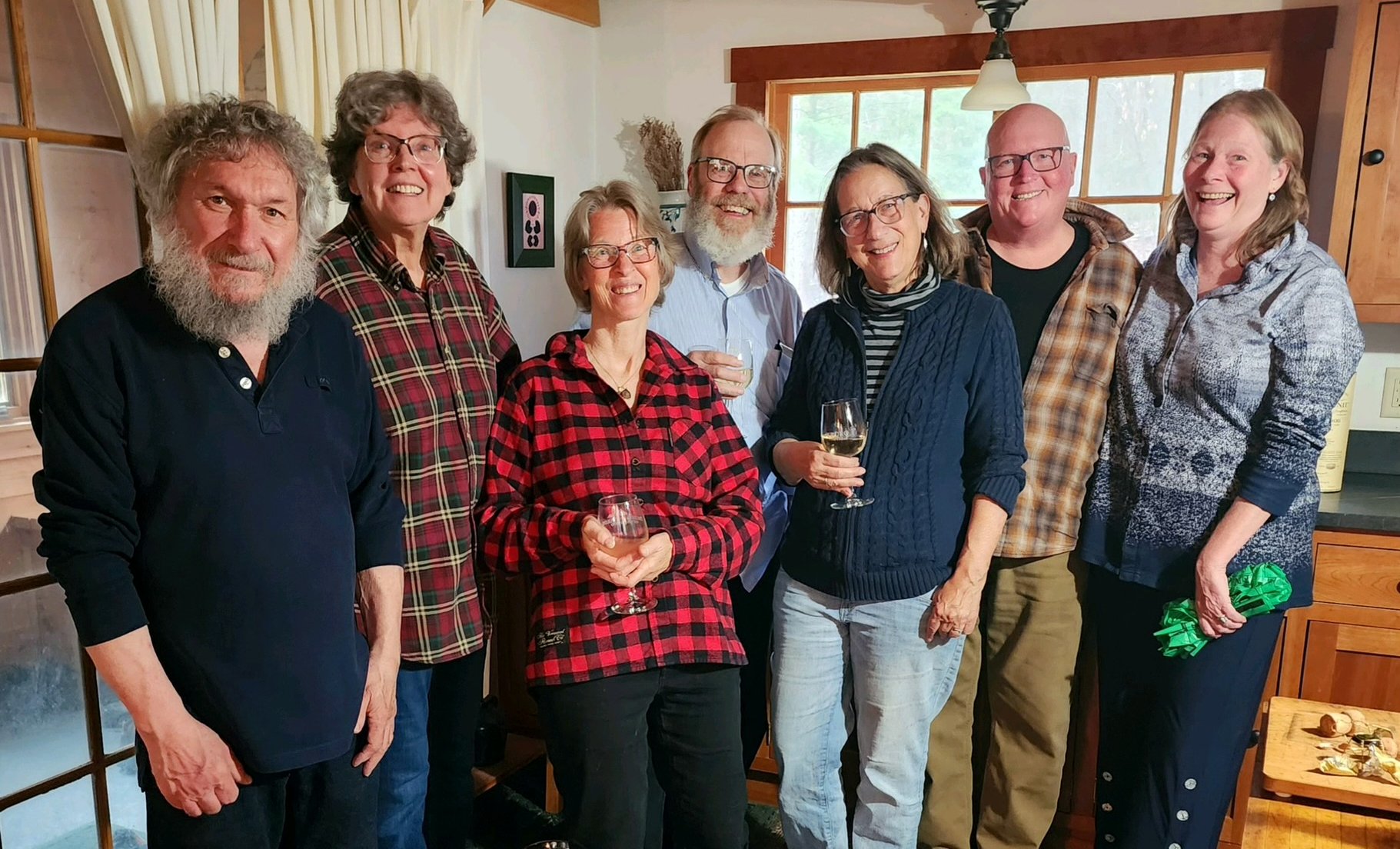Duxbury Land Trust acquires 57 acres on Camel’s Hump’s doorstep
May 19, 2023 | By Lisa Scagliotti A popular fishing spot on Ridley Brook runs through the Duxbury Land Trust's newly acquired property. Photo by Catherine Gjessing
The Duxbury Land Trust recently announced that it has completed the purchase of 57 acres beside Camel’s Hump State Park that now will be protected by perpetual conservation easements.
The land sits at the intersection of River Road and Camel’s Hump Road, three miles directly north of the parking access to the Monroe Trail which leads to the summit of Camel's Hump. The spot is the gateway to the most-used and well-known entrance to the state park.
Completed on May 1, the purchase was made with a $250,000 grant from the Vermont Housing & Conservation Board. The board, together with the Vermont River Conservancy, will hold the development rights, perpetual conservation easement restrictions, and public access easement to conserve the land in perpetuity, according to the land trust.
“We are really grateful to the Vermont Housing & Conservation Board,” said land trust Vice Chair Dan Cardozo.
The property was originally three contiguous parcels of mostly forested land of natural and historic significance, Cardozo noted. It includes the lower part of Ridley Brook and about a half mile stretch along the Winooski River.
The land trust bought the property from James L. Hanley whose family owned the land since 1953. Hanley conveyed the land to the Duxbury Land Trust to assure its conservation. “He wanted to keep the land open and pristine,” Cardozo said.
The yellow outline shows the three parcels that make up the 57-acre purchase. Map courtesy the Duxbury Land Trust
As the lead volunteer working over the past two years towards the recent purchase, Cardozo was involved from the early inquiry discussions with Hanley to the funding and acquisition steps. “With this acquisition, the Duxbury Land Trust has conserved some 550 acres of land in the town of Duxbury,” he said.
Given the location, the land trust hopes the next phase of this transaction will come to fruition: having the State of Vermont acquire the property to make it part of the state park. Steps are currently in progress for that to happen. “We’ve been partnering with them all along,” said Gannon Osborn, Land Conservation Program Manager in the Vermont Department of Forests, Parks, and Recreation of the land trust. “All along the final resting place for this was intended to be with Forests, Parks, and Recreation as part of the state park.”
That final step would not involve a purchase, Osborn said, but rather the donation of the property to the state given that the Vermont Housing & Conservation Board’s grant covered the purchase. Having the land eventually be state property was the goal from the start, he said.
There are still a variety of steps in the state’s acquisition process, Osborn explained, including mapping and surveys and deed research. The transaction will require approval from Agency of Natural Resources leaders and the governor, he noted.
Cardozo said he expects that process may take up to another year.
Regardless of the final step, the land trust’s acquisition step was hailed by the Green Mountain Club, the nonprofit organization dedicated to stewarding the Long Trail in Vermont. The club has followed the Duxbury group’s effort to add to the conserved land near the state park through which the Long Trail passes.
“The location is an important area for the Winooski River valley corridor,” said Mollie Flanigan, director of land conservation at the Green Mountain Club. “This is an exciting project with the opportunity to add to the state park.”
Flanigan noted that there are several areas along the River Road which runs along the Winooski River between Duxbury and Bolton where state land abuts the river. Adding to that conserved area will be a benefit for wildlife and maintaining the open landscape, she said, pointing out that several years ago, a section of the Long Trail was moved in order for it to run across state land in that area.
Duxbury Land Trust board members gather to toast an historic milestone with the recent land purchase. Left to right: Alan and Audrey Quackenbush, Jess Engels, Dan Cardozo, Janet Bisbee, Jim McCarthy and Catherine Gjessing. Photo by Lynne Cardozo
Founded in 1994, the Duxbury Land Trust is a volunteer organization with a mission “to preserve and protect the natural, cultural, and aesthetic resources that contribute to the rural character of the town for the benefit of current and future generations of its citizens and those of neighboring communities.”
The organization seeks out parcels and partners with other land trusts and conservation organizations to promote education and encourage responsible land stewardship and values.
Cardozo explained that the group’s primary focus is on riparian areas along brooks and streams, and tracts of unfragmented forest lands. “Conservation easements and ownership are the main tools the Duxbury Land Trust has used to conserve these areas,” he said.

